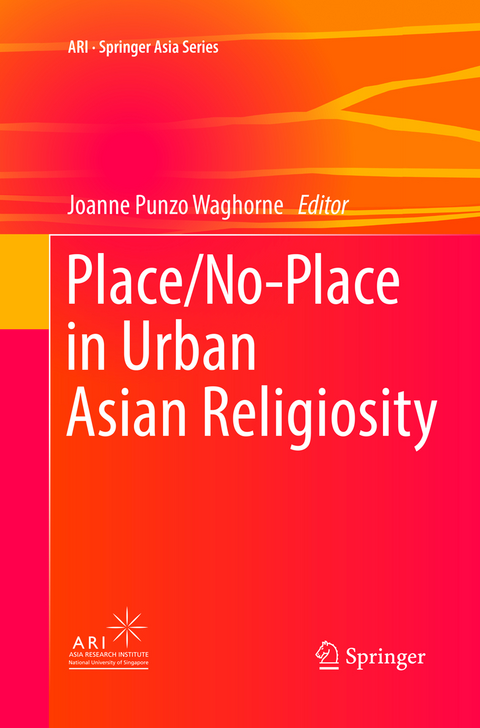
Place/No-Place in Urban Asian Religiosity
Springer Verlag, Singapore
978-981-10-9148-3 (ISBN)
Joanne Waghorne works in contemporary theoretical directions in the study of religion, especially issues of emerging religious/spiritual organizations, practices, and self understanding in the present era of mass communication, urbanization, and globalization. Spatial theory, cosmopolitanism, concepts of the public sphere, world systems, and visual studies inform her interdisciplinary approach which she works to integrate with her roots in History of Religions and phenomenology. Her concerns include revisioning World Religions/Comparative Religion in a post-colonial/post-modern era. Her publications contextualize these issues in contemporary urban India and in Singapore, and in the Hindu diaspora. Fellowships from the National Endowment for the Humanities, Fulbright, and the American Institute of Indian Studies have supported her fieldwork in India. Recently she was a Fulbright-Hays Faculty Research Abroad Fellow and Visiting Senior Research Fellow at the Asian Research Institute(Globalization and Religion cluster), National University of Singapore, researching gurus, devotees, and their international organizations from Singapore.
1. Introduction–Negotiating Place, Non-Place, and No-Place.- 2. From Megachurches to the Invisible Temple: Placing the Protestant “Church” in the Seoul Metropolitan Area.- 3. No-Place, New Places: Death and its Rituals in Urban Asia.- 4. Alone Together: Global Gurus, Cosmopolitan Space, and Community.- 5. On Daoism and Religious Networks in a Digital Age.- 6. Losing the Neighborhood Temple (Or Finding the Temple and Losing the Neighborhood): Transformations of Temple Space in Modern Beijing.- 7. Roadside Shrines, Storefront Saints, and Twenty-First Century Lifestyles: The Cultural and Spatial Thresholds of Indian Urbanism.- 8. Cosmopolitan Spaces, Local Pathways: Making a Place for Soka Gakkai in Singapore.- 9. Neighborhood Associations in Urban India: Intersection of Religion and Space in Civic Participation.- 10. Making Places for Vivekananda in Gwalior: Local leadership, National Concerns, and Global Vision.- 11. Carving Place: Foundational Narratives from a North Indian Market Town.
| Erscheinungsdatum | 18.08.2018 |
|---|---|
| Reihe/Serie | ARI - Springer Asia Series ; 5 |
| Zusatzinfo | 11 Illustrations, black and white; XII, 229 p. 11 illus. |
| Verlagsort | Singapore |
| Sprache | englisch |
| Maße | 155 x 235 mm |
| Themenwelt | Geisteswissenschaften ► Religion / Theologie |
| Naturwissenschaften ► Geowissenschaften ► Geografie / Kartografie | |
| Sozialwissenschaften ► Soziologie ► Makrosoziologie | |
| Sozialwissenschaften ► Soziologie ► Spezielle Soziologien | |
| Schlagworte | religious buildings in Asia • religious institutions within megacities in Asia • religious organizations within megacities in Asia • Urban Asian Religiosity • Urbanization in Asia |
| ISBN-10 | 981-10-9148-X / 981109148X |
| ISBN-13 | 978-981-10-9148-3 / 9789811091483 |
| Zustand | Neuware |
| Haben Sie eine Frage zum Produkt? |
aus dem Bereich


